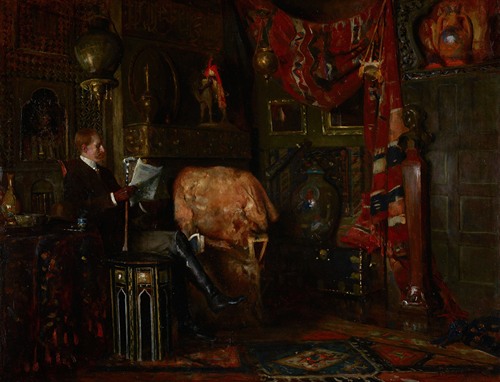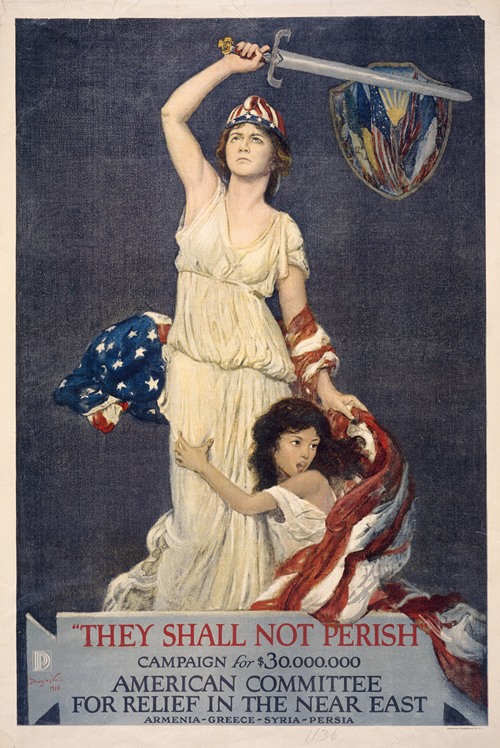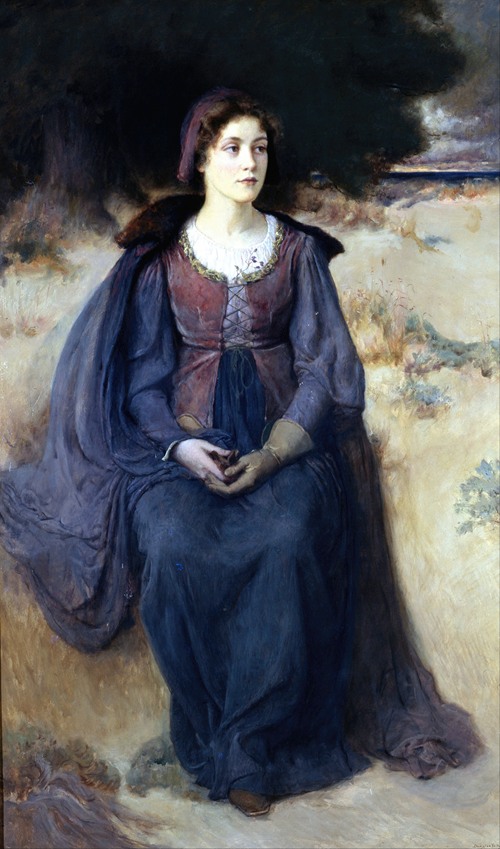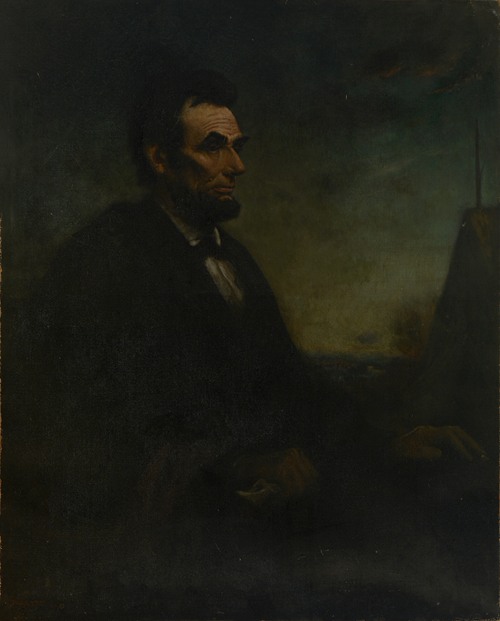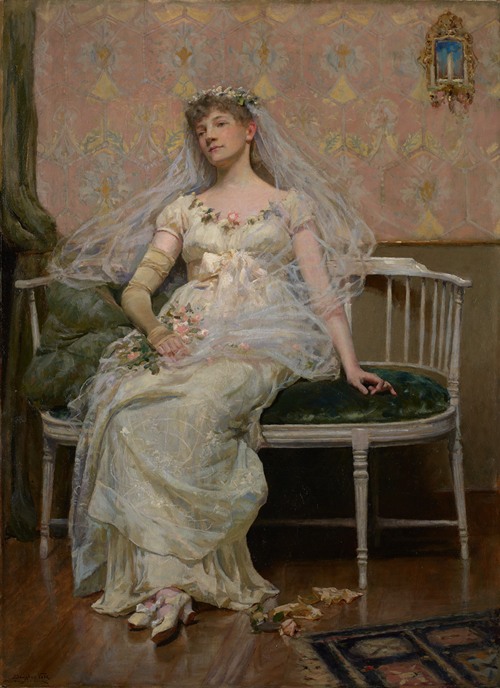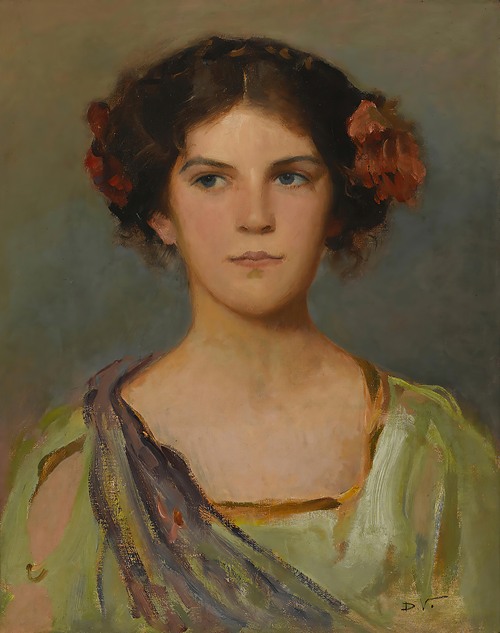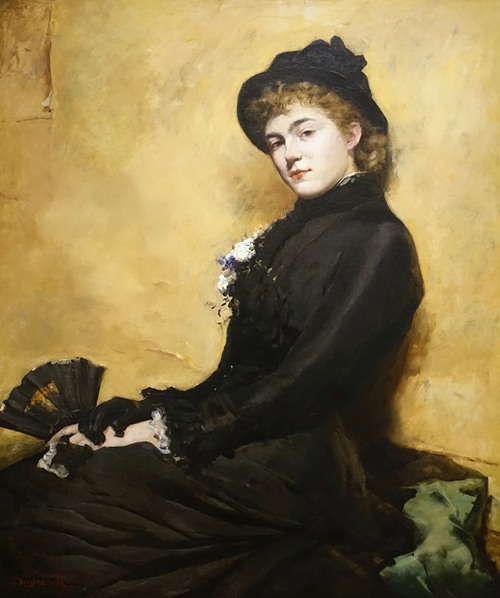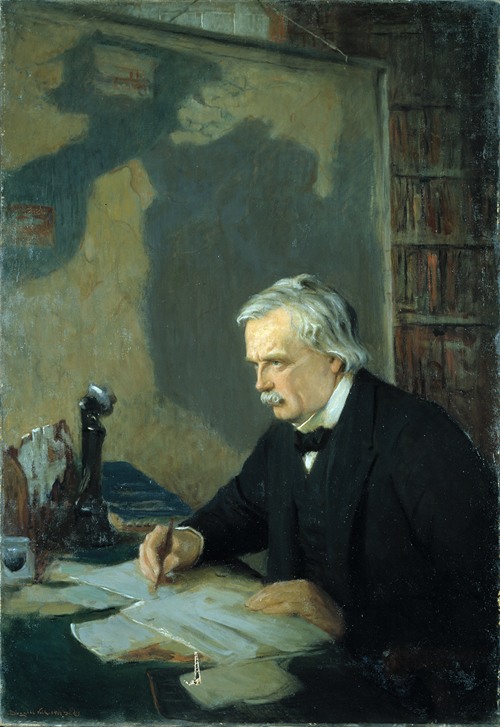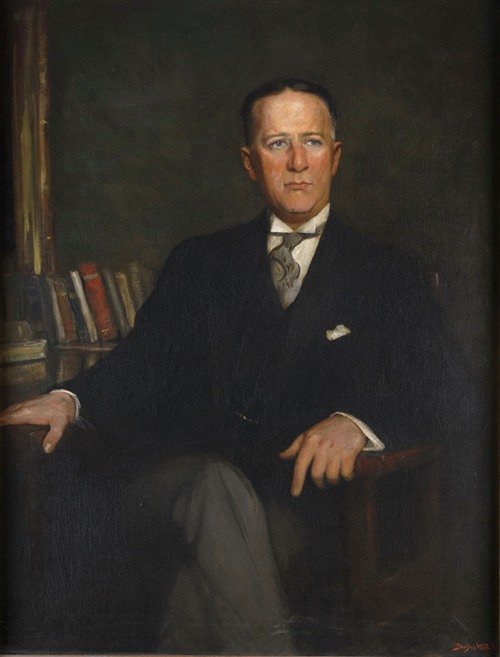
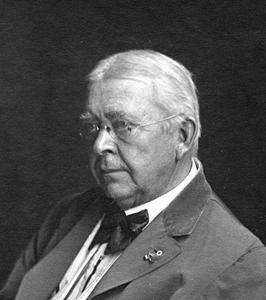
Stephen Arnold Douglas Volk was an American portrait and figure painter, muralist, and educator. He taught at the Cooper Union, the Art Students League of New York, and was one of the founders of the Minneapolis School of Fine Arts. He and his wife Marion established a summer artist colony in western Maine.
He was born in Pittsfield, Massachusetts, to Emily Clarissa King (Barlow) Volk and the sculptor Leonard Wells Volk. He was named for his mother's maternal cousin, Stephen A. Douglas, the Democratic Party presidential nominee in 1860, who lost to Republican presidential nominee Abraham Lincoln. Congressman Lincoln posed for a bust by Leonard Volk in early 1860, and the sculptor made plaster casts of his face and hands. Four-year-old Douglas entertained the future president.
Volk spent his childhood in Chicago, but his family moved to Europe when he was fourteen. He began studying art in Rome, and attended the École des Beaux-Arts in Paris (1873 to 1879), where he was a pupil of Jean-Léon Gérôme. At age nineteen, he exhibited at the Paris Salon of 1875.
He returned to the United States, and was hired as an instructor at the Cooper Union in New York City, where he taught from 1879 to 1884 and from 1906 to 1912. He helped to found the Minneapolis School of Fine Arts in 1886, and served as its director until 1893. He taught at the Art Students League of New York (1893 to 1898), the National Academy of Design (1910 to 1917), and intermittently at the Society for Ethical Culture.
He was also a working artist, noted for his figure and portrait paintings. He exhibited three works at the 1893 World's Columbian Exposition in Chicago, where the group won a medal, his first major award. One of the three, a "story picture" titled The Puritan Maiden, featured a young woman huddled against a tree in a bleak winter landscape. The footprints in the snow of her (unseen) lover lead away into the distance – "The snows must melt, the trees bud and roses bloom, ere he will come again." It had been painted twelve years earlier, but became enormously popular at the Exposition and later through engraved copies.
Family members posed as models for a number of his most famous paintings. Puritan Mother and Child (1897), featured his wife in historical costume embracing their youngest son, and was part of the group that won a gold medal at the 1915 Panama-Pacific Exposition in San Francisco. It is now in the collection of the Carnegie Museum of Art in Pittsburgh. The Young Pioneer (1899), a full-length portrait of his son Gerome in rustic costume holding a canoe paddle, won first prize at the 1899 Colonial Exhibition in Boston. It was bought for the Metropolitan Museum of Art in 1906, but later deaccessioned. The Boy with the Arrow (1903), which featured his son seated on a rock with Kezar Lake in the distance, won the 1903 Carnegie Prize from the Society of American Artists, a silver medal at the 1904 Louisiana Purchase Exposition in St. Louis, and the 1907 gold medal at the Carolina Art Association. It is now in the collection of the Smithsonian American Art Museum.
He was one of eight American artists commissioned by the National Art Committee to depict major figures from the Great War (World War I). His three portraits – King Albert I of Belgium (1919), standing in uniform on a battlefield; British Prime Minister David Lloyd George (1919–20), seated at his desk; General John J. Pershing (1920–21), standing in uniform with his horse's reins in his hand – were donated to the National Portrait Gallery. The first two were later transferred to the Smithsonian American Art Museum. An abandoned version of Volk's Pershing portrait showed the general standing beside the grave of an unknown soldier.
In 1881 Volk married the artist Marion Larrabee (1859–1925). She became the first instructor at the Minneapolis School of Fine Arts. Volk retired to Maine following his wife's 1925 death. He died at Fryeburg, Maine on February 7, 1935.
